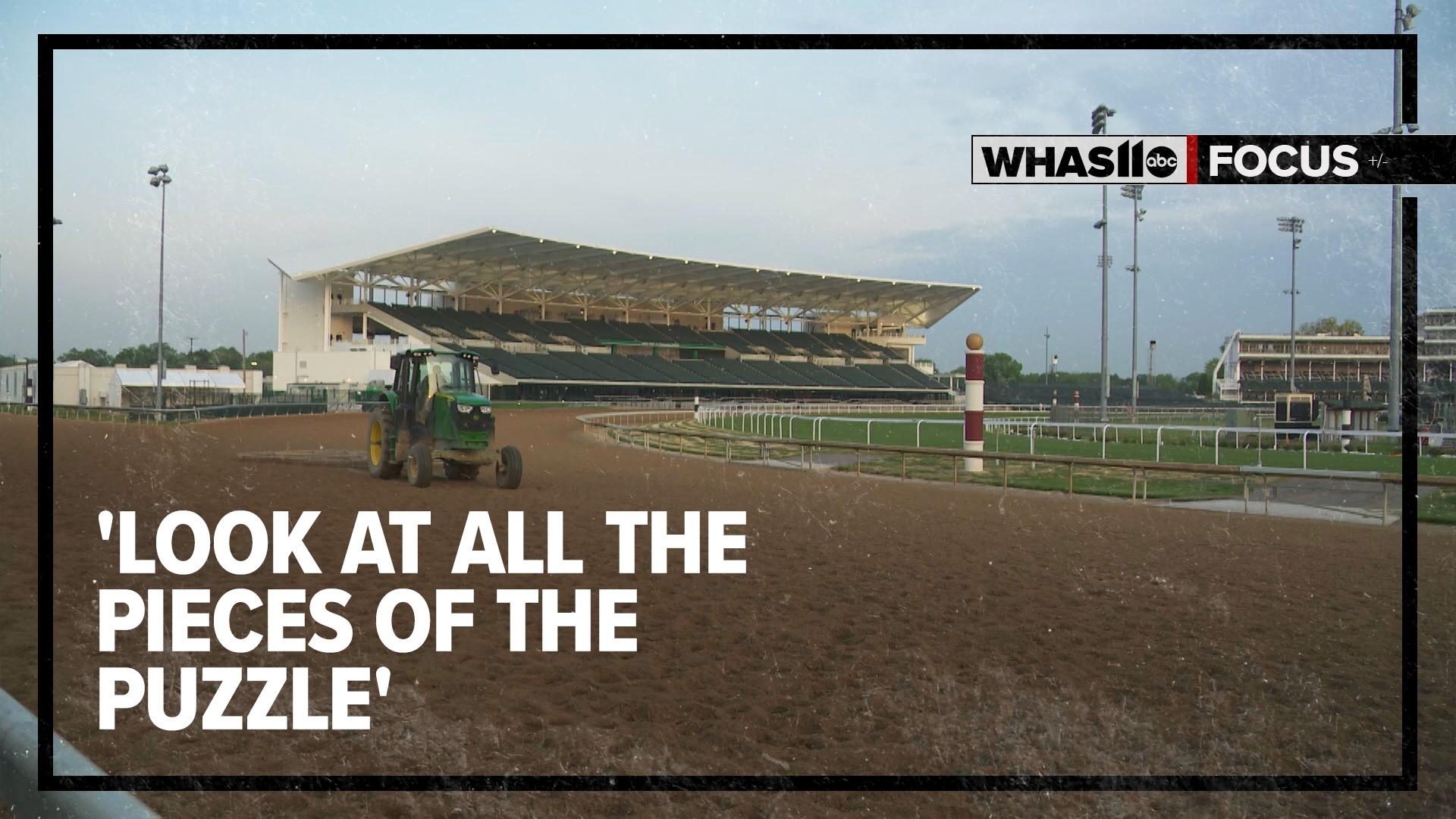LOUISVILLE, Ky. — Horse racing and equine experts, including those from the Horseracing Integrity and Safety Authority (HISA), continue to search for clues in the mystery surrounding horse deaths at Churchill Downs.
Despite the recent 12 deaths at the historic track, racing resumed Thursday evening.
However, due to the fatalities and following an emergency summit of equine veterinarians on Tuesday, Churchill is implementing new HISA regulations to minimize risks to horses and riders at the track.
The new measures were announced without any clear idea yet about what is behind this “cluster” of horse deaths.
“There’s an investigation underway, the KHRC (Kentucky Horse Racing Commission) is conducting one, Churchill is conducting one, and so are we,” Lisa Lazarus, CEO of HISA, told FOCUS.
Part of the investigation includes an analysis by renowned track superintendent, Dennis Moore, out of California.
While his study is pending, Churchill already had its track reinspected last week by the Racing Surfaces Testing Laboratory, headed by University of Kentucky professor and racecourse surfaces engineer Dr. Mick Peterson.
FOCUS was the only media onsite as Peterson and his team used a ground penetrating radar to scan the four layers of the dirt track, looking for red flags.
They also used a machine that replicates a galloping thoroughbred’s front leg pounding the dirt at 2,500 pounds of force.
The team conducted the same tests prior to the spring meet and therefore prior to Kentucky Derby 149.
That day in races leading up to the Derby itself, a pair of horses in separate races suffered catastrophic injuries and had to be euthanized.
“We didn’t see any indications, we have all these tests that we perform every day, and we did not see any indication,” Peterson said.
Data from the first inspection and data from the re-inspection, he says, were consistent.
“We are looking at the track information to help the Kentucky Horse Racing Commission go back and look at all the pieces of the puzzle,” Peterson pointed out.
Other pieces of the puzzle include the veterinary history of the 12 horses and their prior medications, as well as their pending necropsies.
“These things are multifactorial, it’s very rarely just one situation,” Lazarus stressed. “It’s very rarely just one item that’s causing the issue.”
The circumstances behind the horse fatalities are also different.
“Some of them were on the dirt track, some were on the turf track, there was a paddock accident, there were also a couple of sudden deaths,” she said.
Lazarus says they need to look for common factors and trends.
With six weeks left of horse racing this meet at Churchill Downs, the priority is to find answers to stop the trend of these tragic breakdowns.
Make it easy to keep up-to-date with more stories like this. Download the WHAS11 News app now. For Apple or Android users.
Have a news tip? Email assign@whas11.com, visit our Facebook page or Twitter feed.

